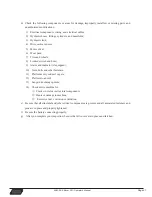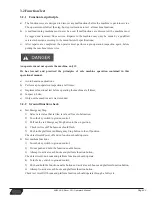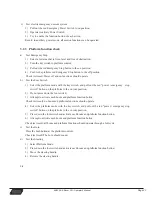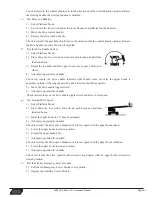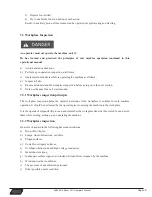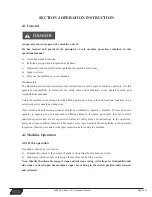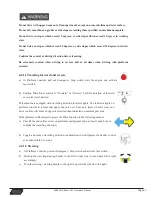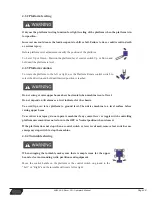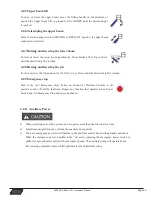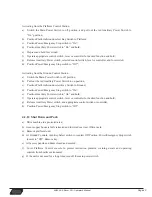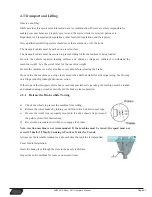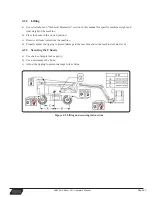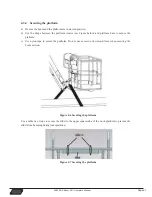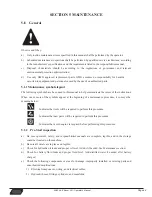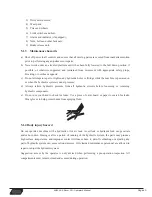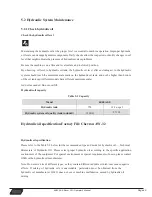
3) Drive motor/motor;
4) Wear pads;
5) Tires and wheels;
6) Limit switches and horn;
7) Alarm and indicator (if equipped);
8) Nuts, bolts and other fasteners;
9) Brake release unit.
5.1.3 Maintenance hazards
a) Shut off power to all controls and ensure that all moving parts are secured from inadvertent motion
prior to performing any adjustments or repairs;
b) Never work under an elevated platform until it has been fully lowered to the full down position, if
possible, or otherwise supported and restrained from movement with appropriate safety props,
blocking, or overhead supports;
c) Do not attempt to repair or tighten any hydraulic holes or fittings while the machine is powered on
or when the hydraulic system is under pressure;
d) Always relieve hydraulic pressure from all hydraulic circuits before loosening or removing
hydraulic components;
e) Do not use your hand to check for leaks. Use a piece of card- board or paper to search for leaks.
Wear gloves to help protect hands from spraying fluid.
5.1.4 Body injury hazard
Do not operate a machine with a hydraulic oil or air leak. An air leak or hydraulic leak can penetrate
and/or burn skin. During or after a period of running of the hydraulic system, the parts may produce
high surface temperature, and improper contact will cause burn to skin. Overhauling or adjusting any
part of hydraulic system can cause serious injuries. Only trained maintenance personnel are allowed to
repair or adjust the hydraulic system.
Suggestion: access by the operator is only advised when performing a pre-operation inspection. All
compartments must remain closed and secured during operation.
$-(%RRP/LIW 2SHUDWRU¶V0DQXDO
3DJH

